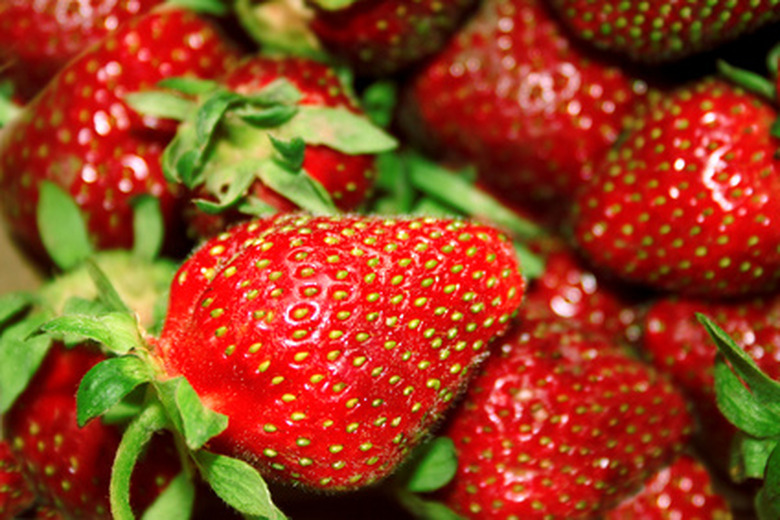How To Remove Seeds From Strawberries
Strawberries are sweet, bright red fruits that are full of nutrients and low in calories. This fruit is easily recognized by its unique shape and seeds that grow on the outside. Strawberry seeds can be taken from the fruit and planted to grow new strawberry plants, but it can be difficult to remove the seeds without destroying the strawberry. However, if you spend a little time on it, you can harvest the seeds and still enjoy the fruit.
Step 1
Cut the green stems and leaves off the top of the strawberries with a sharp knife.
Step 2
Slice the outer layer of the strawberries off with the knife. Cut just deep enough so no seeds remain on the strawberry.
- Strawberries are sweet, bright red fruits that are full of nutrients and low in calories.
- Strawberry seeds can be taken from the fruit and planted to grow new strawberry plants, but it can be difficult to remove the seeds without destroying the strawberry.
Step 3
Place the seeds in a blender and add enough water to cover them.
Step 4
Blend the strawberry seeds for three to five seconds on medium speed. The good seeds will sink to the bottom of the blender while the bad seeds and strawberry pulp will float to the top.
Step 5
Pour the contents of the blender out slowly. Pull the seeds out from the bottom of the blender with your hands.
Grow Strawberries From Seed
You can save and sow seeds from your favorite garden strawberries (Fragaria x ananassa), perennial in U.S. Department of Agriculture plant hardiness zones 3 through 10, but most are hybrid cultivars that won't come true from seed. Discard any seeds that float to the surface, as they won't be viable, and pour the mixture of water and strawberry pulp through a strainer that has mesh that's fine enough to retain the seeds. If you keep the container at temperatures between 60 and 75 degrees Fahrenheit, the seeds should germinate within one to six weeks. Use only half the amount specified, which for the kelp would be 1 tablespoon of the concentrate per gallon of water. After one month, you can raise that to the full amount of 2 tablespoons per gallon every two weeks. They should be ready to go outdoors after another six weeks. Work 1/4 cup of an all-purpose organic fertilizer such as 5-5-5 into the planting hole for each seedling, water them well and mulch them with straw.
- Place the seeds in a blender and add enough water to cover them.
- Discard any seeds that float to the surface, as they won't be viable, and pour the mixture of water and strawberry pulp through a strainer that has mesh that's fine enough to retain the seeds.
Things Needed
- Knife
- Blender
- Water
References
- WHFoods.com: Strawberries
- The Vegetable Gardener's Bible, 2nd Edition; Edward C. Smith
- Zipcode Zoo: Fragaria x Ananassa 'Fresca'
- Fruit Breeding; Jules Janick and James N. Moore, Editors
- Garden of Eaden: How to Collect and Prepare Strawberry Seed for Propagation
- The Old Farmer's Almanac: Strawberries
- The American Gardener: Homegrown Harvest: Petite and Sweet Alpine Strawberries
- The Plant Book; Susan Page and Margaret Olds
